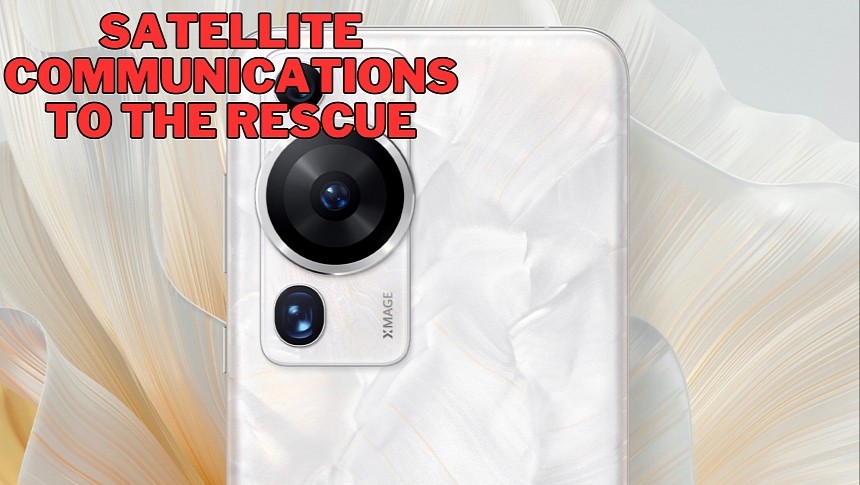Long-time Apple rival Huawei is trying to conquer the automotive world in various ways, including partnerships with traditional carmakers. As part of these deals, the Chinese firm handles the software capabilities of new-generation vehicles, while also powering smart features, including advanced connectivity options.
At the same time, Huawei is also trying to win the hearts of drivers with its lineup of mobile devices.
A recent incident involving a driver whose car broke down in the western Sichuan region in China became a perfect marketing stunt for Huawei.
A Chinese driver explained that he got stuck on mountain roads with no cellular signal. Because his car no longer worked, the driver needed to call for help, but that was impossible due to the missing signal.
However, the Huawei P60 Pro in his pocket came to the rescue, as it supports satellite communications. The man was, therefore, able to send a message and ask for help in a critical moment that could have otherwise become fatal.
Needless to say, Huawei’s phones aren’t the only ones that feature satellite communications. Apple has promoted similar capabilities on every occasion lately, and in some ways, Huawei seems to copy its marketing strategy.
The Chinese tech giant responded to the story posted on a forum, explaining that multiple devices come with Beidou satellite messaging. Drivers are recommended to activate the feature just in case they need emergency help in a remote area.
Apple’s feature is called Emergency SOS and is available on the latest-generation iPhones. The feature allows smartphones to connect to satellites to send emergency messages. Apple configured its devices to make the system as straightforward as possible, so when activating satellite communications, the phones ask a series of questions to better understand the emergency.
When the connection between the iPhone and the emergency responders is established, the device automatically shares critical details, such as your Medical ID, the answers that you provided, and your coordinates. Additionally, the emergency teams are also provided with information about your iPhone, including the remaining battery life. As such, they can determine the likelihood of you running out of battery in case of an emergency.
Huawei’s new features are living proof the company is working hard to remain a fierce competitor to the likes of Apple and Google. Since May 2019, the Chinese firm can no longer use Android and other software and hardware developed by American companies. Due to sanctions in the United States and a series of other countries, Huawei turned the focus to in-house solutions, including a fully featured Android alternative. Called HarmonyOS, the platform evolved to become an all-in-one operating system that powers not only phones, but also smart devices and new-generation cars as part of partnerships with Chinese auto manufacturers.
A recent incident involving a driver whose car broke down in the western Sichuan region in China became a perfect marketing stunt for Huawei.
A Chinese driver explained that he got stuck on mountain roads with no cellular signal. Because his car no longer worked, the driver needed to call for help, but that was impossible due to the missing signal.
However, the Huawei P60 Pro in his pocket came to the rescue, as it supports satellite communications. The man was, therefore, able to send a message and ask for help in a critical moment that could have otherwise become fatal.
Needless to say, Huawei’s phones aren’t the only ones that feature satellite communications. Apple has promoted similar capabilities on every occasion lately, and in some ways, Huawei seems to copy its marketing strategy.
The Chinese tech giant responded to the story posted on a forum, explaining that multiple devices come with Beidou satellite messaging. Drivers are recommended to activate the feature just in case they need emergency help in a remote area.
Apple’s feature is called Emergency SOS and is available on the latest-generation iPhones. The feature allows smartphones to connect to satellites to send emergency messages. Apple configured its devices to make the system as straightforward as possible, so when activating satellite communications, the phones ask a series of questions to better understand the emergency.
When the connection between the iPhone and the emergency responders is established, the device automatically shares critical details, such as your Medical ID, the answers that you provided, and your coordinates. Additionally, the emergency teams are also provided with information about your iPhone, including the remaining battery life. As such, they can determine the likelihood of you running out of battery in case of an emergency.
Huawei’s new features are living proof the company is working hard to remain a fierce competitor to the likes of Apple and Google. Since May 2019, the Chinese firm can no longer use Android and other software and hardware developed by American companies. Due to sanctions in the United States and a series of other countries, Huawei turned the focus to in-house solutions, including a fully featured Android alternative. Called HarmonyOS, the platform evolved to become an all-in-one operating system that powers not only phones, but also smart devices and new-generation cars as part of partnerships with Chinese auto manufacturers.






